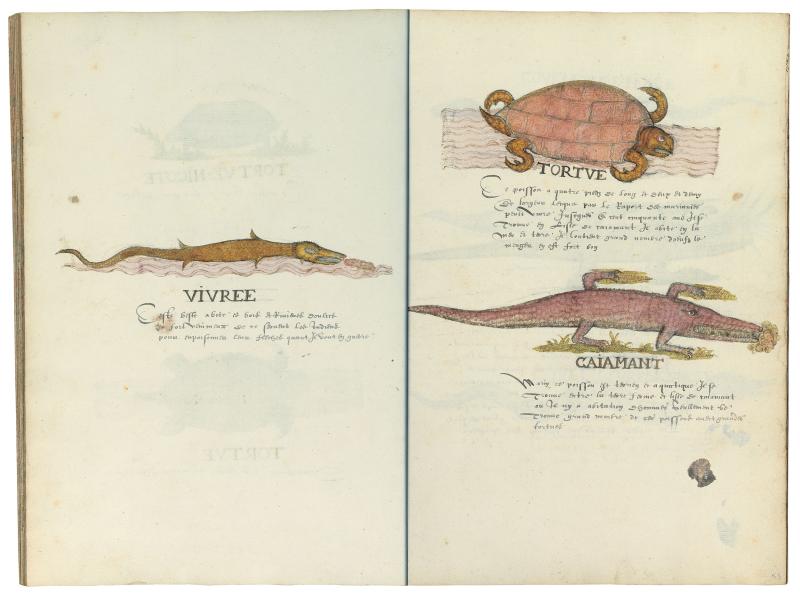
Histoire Naturelle des Indes
Illustrated manuscript
Bequest of Clara S. Peck, 1983
Vivree (Weeverfish)
This animal lives in the woods and in fresh water rivers and is very poisonous. The Indians use it to poison their arrows when they go to war.
Tortve (Turtle)
This fish is four feet long and two and a half feet wide. According to the reports of sailors it can live up to a hundred and fifty years. It is found on Cayman Island and lives in the sea as well as on land. It lays a large number of eggs and is good to eat.
Caiamant (Crocodile)
Marine, this fish is terrestrial and aquatic. It is found between the mainland and Cayman Island where there is no human settlement only a great number of these fishes with large turtles.
In 1983, The Morgan Library & Museum received, as the bequest of Clara S. Peck, an extraordinary volume whose beautiful paintings and descriptions document the plant, animal, and human life of the Caribbean late in the sixteenth century. Spaniards had already begun to exert influence over the indigenous people of the area when explorers from England and France arrived, among them Sir Francis Drake. The volume, known as the Drake Manuscript and titled Histoire Naturelle des Indes when it was bound in the eighteenth century, gives us a wonderful picture of daily life at the time of Drake's many visits to the region. Although Drake's connection to the manuscript is uncertain, he is mentioned on more than one occasion by the authors. Drake himself is known to have painted, but none of his work survives.
Contents: 199 images of West Indian plants, animals and human life, with accompanying manuscript captions written in late sixteenth-century French.
Medium: Most of the illustrations consist of a black chalk underdrawing and a combination of pen and brown ink with watercolor; on some images selected areas have also been glazed with a gum.
Binding: Bound or rebound in brown leather in the late 18th century.
Pagination: Penciled folio numbers (1–125) in lower right corner of each page were added by The Morgan Library & Museum. Folios 92v–93, 93v–94, and 95v–96 are fold-out leaves.
